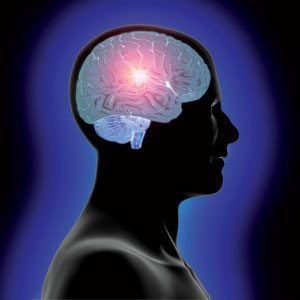 Is back pain and the brain connected by old injuries and bad developmental movement habits?. New studies featured in Psychology Today may offer new clues.
Is back pain and the brain connected by old injuries and bad developmental movement habits?. New studies featured in Psychology Today may offer new clues.
Dr. Sarno’s book, Healing back pain sold millions of copies based on the idea that it was all in your head. Dr. John Sarno was unique in his theoretical approach to back pain. He was a psychologist who also was a professor of Rehabilitation Medicine at the New York University School of Medicine. His theory of back pain through the idea of TMS (Tension Myofascial Syndrome) was based on how stress and the brain affect how we perceive pain with back pain being his main focus.
Patients who visited him paid a large sum for the initial consultation and were invited back for free for groups of patients he worked with. The irony in all of this is that he worked in the department of rehabilitation who would use and recommend different therapies which in most cases, were ineffective or at times harmful, something he was well aware of. His widely read books have helped people who may have had other reasons for their back pain get relief, by teaching them techniques that he believed reduced their perceived pain.
While this seems great in theory, there are now two new studies featured in Psychology Today that suggest the brain – pain connection may be deeper than originally thought. This may be especially true of chronic pain and fibromyalgia sufferers who have pain out of proportion to their physical findings.
Apparently, brain imaging and other techniques is able to show that pain that persists long after the physical injury that originally caused the pain has healed, is a type of learned behavior that can be “unlearned” through a variety of non-medical interventions.”
In my book, Cheating Mother Nature, it describes my experiences with a couple of people who experienced Dr. Sarno’s work and ironically, they were still in pain. It is also no secret that most treatments for back pain are largely ineffective, and most surgeries either worsen the situation or provide symptomatic relief but do not prevent further back pain episodes. The book explains why body mechanics can lead to back problems and how you can find the people most able to offer effective relief.
Movement is supposed to be more like a slinky, and we are not disjointed bodies looking for a cure. The truth is, many movement problems that are adaptive over the years results in problems such as lower back pain, and over time, the brain will memorize bad or poor movement patterns and even chronic pain. Perhaps, this is why the idea of TMS may make clinical sense, but it is only part of the picture.
Chiropractors have had the most success and satisfaction according to Consumer Reports and other sources with back pain. Their approach of using manipulation, exercises and soft tissue treatment enhances the way we move and more chiropractors are utilizing methods to connect the pain to the brain and reeducate this as well.
The therapy world is beginning to also understand the role of neuroplasticity in chronic pain and chronic dysfunctional movement that is pain producing. Many chiropractors have already recognized that resolving chronic pain requires a holistic approach to care, and that the reductionist medical approach is seeing us as dysfunctional parts, rather than a holistic being that must be evaluated from a holistic point of view.
The symptom is not the problem, but to a patient in pain, the symptoms are real and can be debilitating both physically as well as mentally.
While Sarno’s dogmatic approach suggested it was all in our heads, the therapeutic worlds dogmatic approach of a lack of exercise or it is a disc problem also did not look at the complete picture of why chronic pain exists or why we hurt. A better approach would be to better understand how problems of movement, the brain and our inherited body mechanics may require a holistic integrated approach to give people the relief they want, resulting in the better expenditure of healthcare dollars with respect to chronic pain.
Perhaps in the future, our educational institutions will be teaching doctors holistic evaluation of the musculoskeletal system rather than the current idea of bursitis, tendonitis, disease, knee pain and ankle and foot problems as being separate entities. A better and less fragmented treatment model already exists in most chiropractic offices, so why not start there?
You can read the article in Psychology Today below
Brain Imaging Shows We Can Unlearn Chronic Pain
Neuroanatomical changes observed with learning and unlearning of chronic pain.
Posted Oct 27, 2017
Two new studies, one published last month and another slated for publication in early 2018, confirm through brain imaging and other techniques, that pain that persists long after the physical injury that originally caused the pain has healed, is a type of learned behavior that can be “unlearned” through a variety of non-medical interventions.
For a September 2017 electronic pre-print of an article to appear later this year in the journal Psychological Medicine, Yoshino and colleagues of Hiroshima University Medical School examined the resting state functional magnetic resonance (rFMRI) of both chronic pain patients and healthy controls. rFMRI, shows which parts of the brain are intrinsically connected to each other by demonstrating correlated simultaneous activity among multiple brain regions. Brain regions that are wired together typically “fire” at the same time “rest” at the same time, because one of the brain regions presumably stimulates another through synaptic connections. Thus separated regions of the brain that exhibit correlated activity are said to belong to the same “Intrinsic Connectivity Network (ICN).
Read more